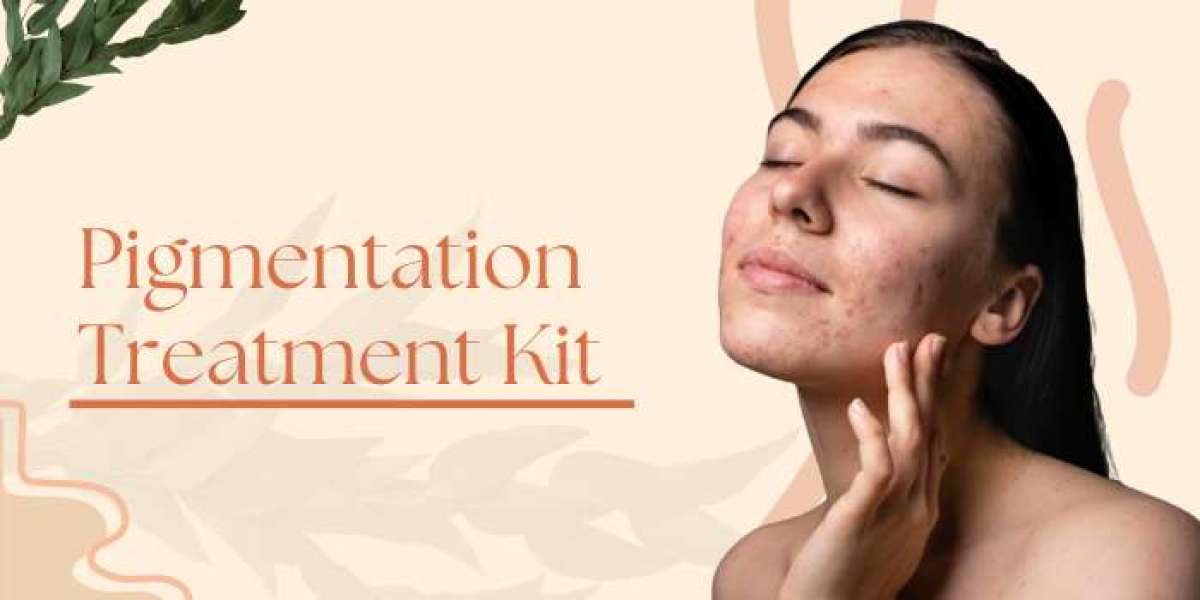Introduction to Pigmentation Treatment and Sun Exposure
When it comes to treating skin pigmentation, effective results are often achieved with specialized pigmentation treatment kit. These kits, comprised of serums, creams, and occasionally medical-grade exfoliants, help to fade dark spots, even out skin tone, and address various skin concerns like melasma, hyperpigmentation, and post-inflammatory marks. However, while using a pigmentation treatment kit, one essential factor that is often underestimated is sun protection. The combination of active ingredients in these treatments, such as retinoids, vitamin C, kojic acid, and hydroquinone, makes the skin more sensitive to UV radiation. Without proper protection, you risk not only undoing your progress but also exacerbating the very issues you’re trying to resolve.
The Science Behind Pigmentation Treatments
Before diving deeper into why sun protection is essential, it is crucial to understand how pigmentation treatments work. The primary goal of these treatments is to lighten dark patches by reducing the production of melanin in the skin. Ingredients like alpha hydroxy acids (AHAs) exfoliate dead skin cells, while others like hydroquinone block melanin production. These ingredients stimulate cell turnover, encouraging new, lighter skin cells to emerge and gradually fade dark spots.
This process, however, leaves the skin in a more vulnerable state. As the top layer of the skin becomes more sensitive and delicate, exposure to harmful UV rays can reverse any progress. In fact, direct sun exposure can trigger an overproduction of melanin, worsening existing pigmentation problems. This is where the critical role of sun protection comes into play.
Why is Sun Protection Critical During Pigmentation Treatment?
1. UV Exposure Aggravates Pigmentation
The most common cause of hyperpigmentation is UV radiation from the sun. Unprotected exposure to UV rays leads to an increase in melanin production as the body’s natural response to shield deeper layers of the skin. When using a pigmentation treatment kit, this natural defense is compromised, making the skin more vulnerable to sun damage. Even short durations in the sun can result in re-darkening of the areas you are trying to lighten.
2. Prevention of Post-Treatment Hyperpigmentation
When undergoing treatments that contain exfoliating acids or depigmenting agents, the skin's barrier becomes thinner. This means that the skin can more easily absorb harmful rays, potentially causing post-inflammatory hyperpigmentation. This is a common condition where the skin darkens after inflammation caused by sunburn, trauma, or acne. By neglecting sun protection, you increase the likelihood of developing new pigmentation problems while treating old ones.
3. Preserving the Results of the Treatment
The purpose of a pigmentation treatment is to achieve a more even, radiant complexion. However, if you don’t incorporate sun protection into your daily skincare routine, the results of your pigmentation treatment will be short-lived. UV rays can negate the progress made by your treatment kit, prolonging the healing process and causing pigmentation issues to resurface. Applying a broad-spectrum sunscreen daily ensures that your skin remains protected, allowing you to maintain the efficacy of the treatment.
4. Risk of Increased Skin Sensitivity
Many ingredients in pigmentation treatments, such as retinoids or chemical peels, cause increased skin sensitivity. These ingredients accelerate cell turnover, removing the dead, damaged skin cells and replacing them with new, healthier ones. This process exposes fresh skin that is more delicate and prone to damage. Without proper protection, UV rays can cause severe sunburn or permanent scarring, leading to uneven pigmentation.
How to Incorporate Sun Protection Into Your Routine
1. Use a Broad-Spectrum Sunscreen
Not all sunscreens are created equal. To fully protect your skin during pigmentation treatment, it is essential to choose a broad-spectrum sunscreen that shields against both UVA and UVB rays. UVA rays penetrate deep into the skin and are primarily responsible for premature aging, while UVB rays cause sunburn. A broad-spectrum sunscreen ensures full protection from both types of harmful rays.
2. Opt for SPF 30 or Higher
Dermatologists recommend using a sunscreen with an SPF of at least 30 when undergoing any skin treatment. SPF 30 blocks about 97% of UVB rays, providing a strong barrier to prevent the harmful effects of the sun. If you are particularly prone to pigmentation issues or live in a sunny climate, consider an SPF 50 for even more protection.
3. Apply Sunscreen Regularly
Simply applying sunscreen once a day isn’t enough to maintain full protection. Sunscreen should be applied 15 to 20 minutes before stepping outside and reapplied every two hours, especially if you are outdoors for long periods. If you are sweating or swimming, water-resistant sunscreens can be helpful, but they will still need to be reapplied regularly.
4. Complement Sunscreen with Other Forms of Protection
While sunscreen is vital, it is not the only defense against UV rays. During and after your pigmentation treatment, it is wise to limit direct sun exposure, particularly between 10 AM and 4 PM, when the sun’s rays are strongest. Wearing protective clothing, such as wide-brimmed hats and sunglasses, and seeking shade when possible will significantly reduce your risk of sun damage.
Choosing the Right Sunscreen for Pigmentation Treatment
When undergoing pigmentation treatment, the type of sunscreen you use matters. It’s essential to look for non-comedogenic formulations that won’t clog pores or cause breakouts, as many individuals with pigmentation issues have acne-prone skin. Sunscreens containing zinc oxide or titanium dioxide are preferable, as these are physical blockers that sit on top of the skin and reflect UV rays. They are generally less irritating for sensitive skin and provide excellent protection.
Some sunscreens also include antioxidants like vitamin C and niacinamide, which help to fight free radicals generated by UV exposure. These additional ingredients can complement your pigmentation treatment by soothing the skin and preventing further damage.
Conclusion: Sun Protection is Non-Negotiable During Pigmentation Treatment
If you are committed to achieving clear, even-toned skin, the importance of sun protection cannot be overstated. Whether you are using creams, serums, or chemical peels to treat pigmentation, safeguarding your skin from UV radiation is the key to long-lasting results. Without proper sun protection, you risk undoing all your hard work and further aggravating pigmentation issues. Incorporating a broad-spectrum sunscreen, minimizing sun exposure, and maintaining an overall skin-protective routine will ensure you get the most out of your pigmentation treatment kit.








